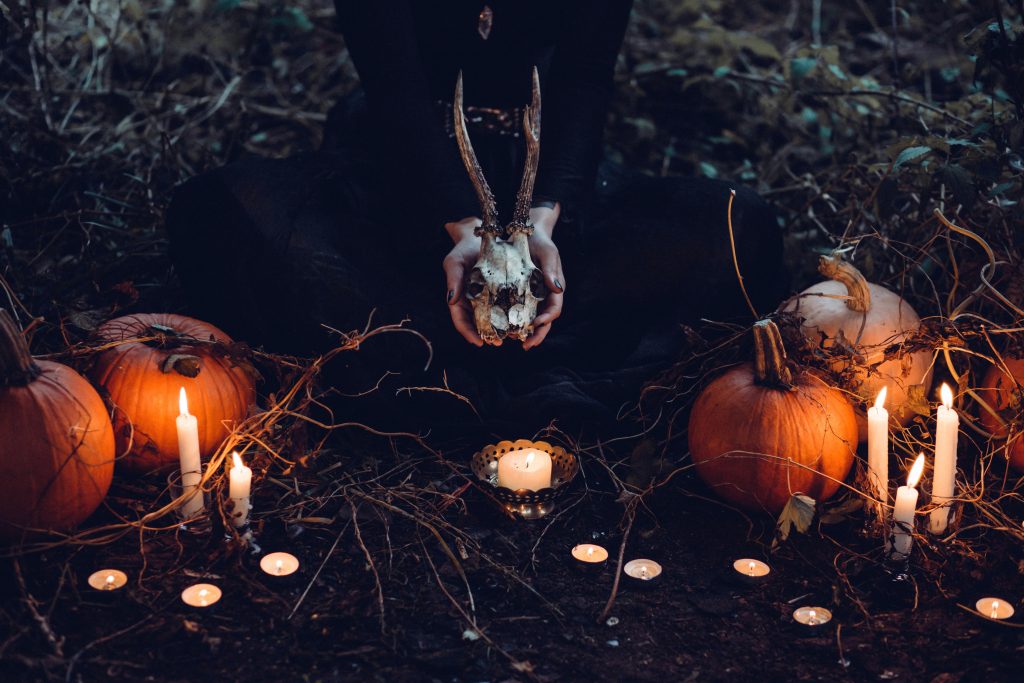Around 2000 years ago, All Hallows Eve was considered to be the scariest night of the year; however, in the 21st century, the only scary aspect left of Halloween is having random little children beating your doors down.
On November 1st, in Celtic (now known as Ireland), the Celts celebrated the festival of Samhain which brought in their New Year – marking the end of the Summer and the harvest. A couple thousand years later and Halloween now celebrates drinking, dressing up and devouring Haribo share bags by yourself.

Photo by Toa Heftiba on Unsplash
Let’s be honest, as soon as it hits October 1st, it’s basically Halloween. A month filled with all things supernatural, over-priced costumes and pumpkin spiced everything. What are you going to wear? How many bags of sweets is enough? Are there Halloween themed cocktail drinks? When does multiple costume changes become too many costume changes? They’re all valid questions. Although, a question not many have the answer to, is how Halloween went from people trying to keep themselves safe from supernatural spirits, to having access to the inappropriate version of nearly every authoritative uniform to wear as a costume.
Not knowing exactly what you’re celebrating has become quite a trend in this new, social media age filled with ‘clout chasers’. Not to worry though, for we present the evolution of Halloween.
Bringing in the beginning of winter, the Celts believed that the night before the new year (All Hallows Eve), the boundary between the world of the living and the world of the dead was tainted. Alongside crops being destroyed, they believed that spirits made it easier for the Druids (a member of the high-ranking professional class in ancient Celtic cultures) to make prophecies and forecasts about the future. The Druids built bonfires, where they made sacrifices to the Celtic deities by burning crops and animals. Whilst attempting to tell fortunes, they wore animal heads and skins – perhaps this is where the tradition of wearing cheap costumes began.

Photo by freestocks.org on Unsplash
When the Romans invaded in 43 A.D., they brought over two of their own festivals to combine with Halloween. Their festivals of ‘Feralia’, which celebrated the passing of the dead and ‘Pomona’, which honoured the goddess of fruit and trees. This most likely explains the fascination with candied fruit, apart from the obvious ‘put sugar on anything and it will sell’ motto adopted by many.
The influence of Christianity had made its way into Celtic lands by the 9th century. The church made November 2nd ‘All Souls Day’, most likely to create a holiday that celebrated the dead in a non-chaotic and a approved-by-the-church manner. However, ‘All Saints Day’ which was on November 1st was still celebrated much larger than ‘All Souls Day’. Soon after, ‘All Hallows Eve’, which was on October 31st became the one night of madness when its name switched to Halloween.
New traditions of having parties, dressing up and sharing stories, arose. People started celebrating the harvest quite differently compared to the Druids, they’d play games, spend time with their friends and go around asking for food or money. Evidently, where the tradition of ‘trick or treating’ began.

Photo by Jason Rosewell on Unsplash
Halloween was slowly becoming less and less superstitious, around the 1900’s there was an emphasis on making October 31st child-friendly. The elaborate trend for over the top parties and decorations didn’t bloom until mid-1900’s, after that Halloween was focused entirely around games, costumes and seasonal celebrations – losing most, if not all of its religious value.
Fast forward a couple more decades to now, where masks are used to give someone a mighty scare instead of concealing one’s identity from potential spirits that may want to visit you, Halloween has been completely reformed once again. The holiday has become a national hotspot for party-goers to lift their spirits – get it?

Photo by Banter Snaps on Unsplash
Taking inspiration from the younger cohort, party planners and club owners started to commercialise Halloween, creating events that gave young adults places to be other than taking their younger siblings ‘trick or treating’. The success not only saw a rise in business also a rise in Halloween partakers.
Drinking games, pub crawls and designing costumes soon fully replaced the superstitious games designed to identify spouses, ghost hunting and religious ceremonies, creating a whole new perspective of Halloween.
Now, the next time someone tells you that you can’t wear an animal head mask and go around predicting people’s future endeavours (not too hard, tell them they’ll have a hangover tomorrow and it’ll most likely be the true), you can give them the whole run down and explain why you’re the only one doing Halloween how it was meant to be.
Words: Rusdeep Heera
Subbed by: Amara Chan
Information sourced from: https://www.history.com/topics/halloween/history-of-halloween
Featured Image Credit: Photo by David Menidrey on Unsplash.

